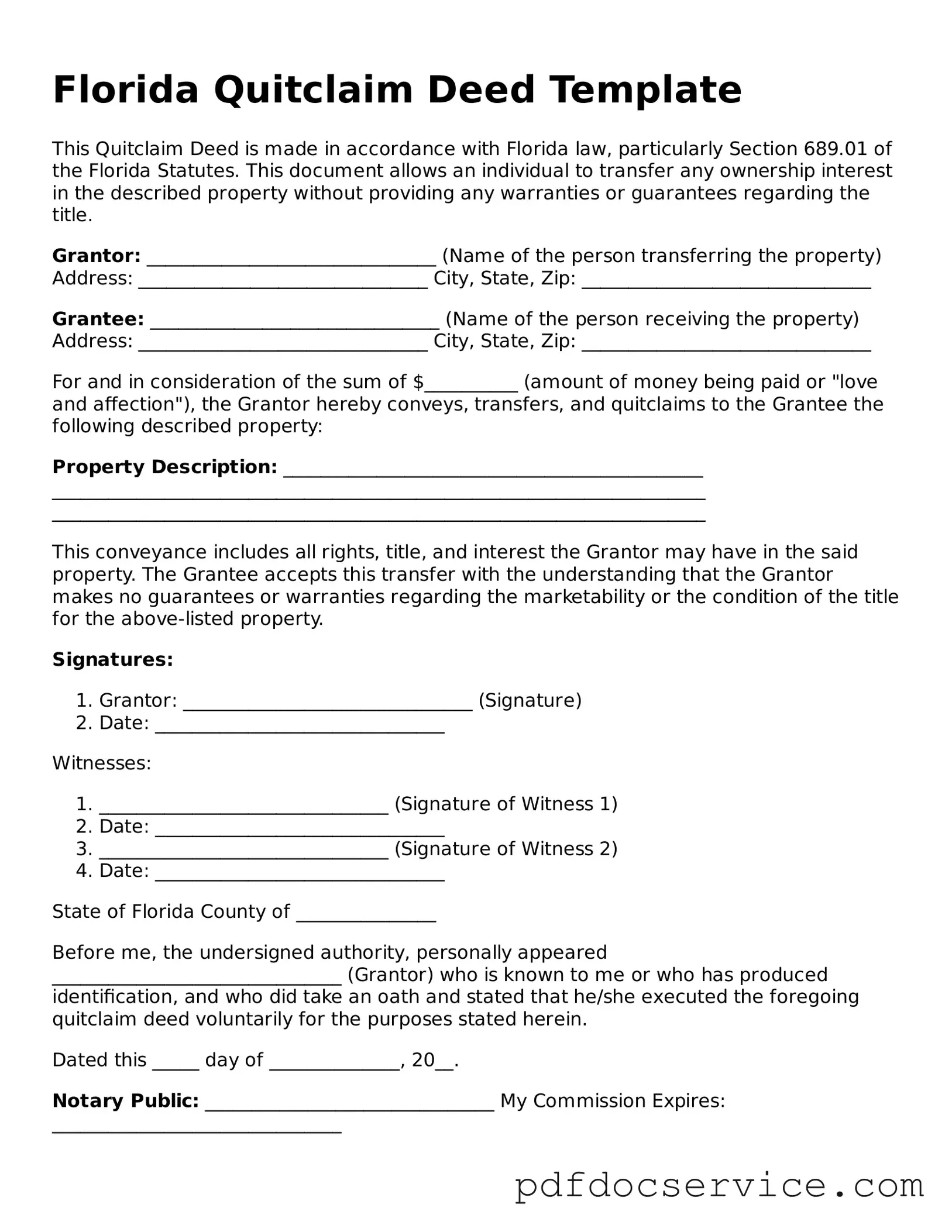In the realm of real estate transactions, the Florida Quitclaim Deed form serves as a crucial instrument for property owners wishing to transfer their interest in a property to another party. This form is particularly significant when the transfer is made between family members, friends, or in situations where the parties know each other well, as it allows for a straightforward transfer without the extensive warranties that other deeds provide. Unlike a warranty deed, which guarantees that the grantor holds clear title to the property and has the right to sell it, a quitclaim deed offers no such assurances. Instead, it conveys whatever interest the grantor may have, if any, and is often used to clear up title issues or to transfer property in divorce settlements. It is essential for both parties to understand the implications of this type of deed, as it does not protect the grantee from any potential claims against the property. Additionally, the completion of the form requires specific information, such as the names of the grantor and grantee, a legal description of the property, and the date of the transfer. Proper execution and recording of the deed are vital steps in ensuring that the transfer is legally recognized and enforceable.
